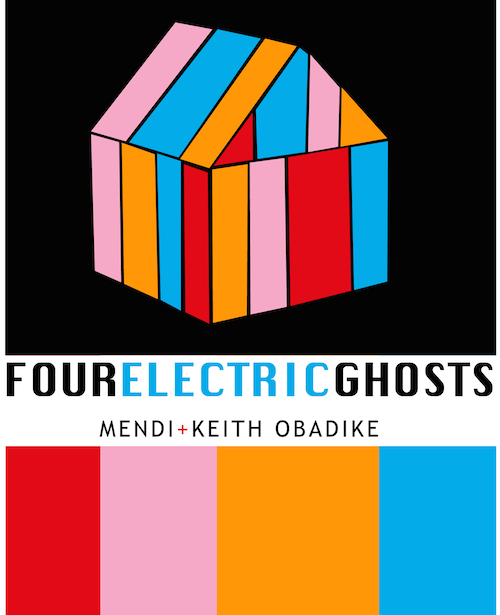Total Art: Tyrone Williams Reviews Mendi and Keith Obadike's Four Electric Ghosts

Tyrone Williams continues his blog-streak of awesomeness at Jacket 2 where—this time—he brings to readers's attention to epic work of Mendi and Keith Obadike, two interdisciplinary poets, who are published by 1913 Press.
Mendi and Keith Obadike, Four Electric Ghosts (1913 Press, 2009, 2011), 189 pp.; Big House/ Disclosure (1913 Press, 2014), 102 pp.—Despite the first, rather interesting, thirty-four pages of storytelling, Four Electric Ghosts is essentially a catalog of what appears to be an Afro-Futurist-inspired opera, at least in terms of its setting and design (disclosure: I’ve not had the opportunity to see any of the Obadikes' theatrical productions). The bulk of the book reprints the lyrics to songs, offers splashy photographs of the production and concludes with “celebrity” interviews (Cornel West and Laurie Anderson) concerning whether or not they believe in “ghosts.” It may be that Four Electric Ghosts is first and foremost a theatrical production whose specular and aural energy overcomes its semantic content (like great pop songs whose lyrics you can’t quite understand). Nevertheless, much more compelling to my taste is Big House/Disclosure, another multi-genre production. “Art” catalog is all over this one too, but unlike the self-conscious uplift (and often banal versifying) that plagues most of Four Electric Ghosts, Big House/Disclosure confronts the variegated, conflicted history of slavery and the African Diaspora with engaging poems, straight, wry, even bitter, “acting” directions-cum-manual instructions, and visual “demonstrations” of said directions/ instructions by the authors. Each poem appears on a verso page, facing a geometrical diagram (based on the writings of Nigerians secret societies, according to the authors) on a recto page. As in Donato Mancini’s Æthel (2007), text and image, semantic and asemic form, collide; the text is not a caption and the image is not a representation even though these top-bottom, dominant-dominated, relationships are exactly what they mimic. Straddling the fence-cum-meeting-place of a typical early 20th c. etiquette book (except here it isn’t about manners so much as the “proper” way to “do” history) and some prototypical Black Arts manifestos on the necessity of overturning and reconstructing history, Big House/ Disclosure undercuts the very possibility of what it enacts: historical recovery and/or burial as therapeutic balm, precursor to revolutionary praxis. [...]
Consider getting your grubby hands on these ones, and learn more—at Jacket 2.


